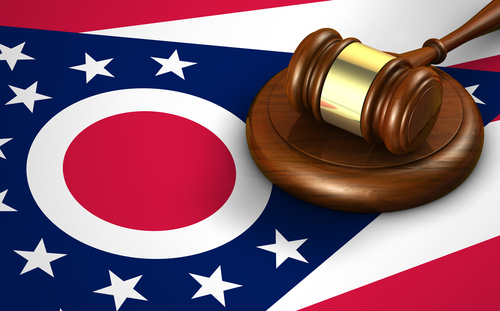SCOTUS limits EPA's authority to regulate climate change, cites 'major questions' doctrine curbing agency power

Image from Shutterstock.
Updated: The U.S. Supreme Court ruled 6-3 Thursday that the Environmental Protection Agency didn’t have broad power to regulate climate change under the Clean Air Act.
Chief Justice John Roberts wrote the majority opinion. The court’s three liberal justices dissented.
The Supreme Court ruled in West Virginia v. Environmental Protection Agency, which considered the EPA’s authority to require states to cut greenhouse gas emissions from power plants under Section 111 of the Clean Air Act’s Section 7411.
West Virginia and other plaintiffs had argued that the EPA has authority only to regulate pollution within the “fenceline” of stationary sources, such as buildings and installations. The EPA asserted broader authority to regulate.
Roberts said the EPA went too far in its “unprecedented” reading of the law, which led to a “fundamental revision of the statute.”
“Capping carbon dioxide emissions at a level that will force a nationwide transition away from the use of coal to generate electricity may be a sensible ‘solution to the crisis of the day,’” Roberts wrote, referring to a prior decision. “But it is not plausible that Congress gave EPA the authority to adopt on its own such a regulatory scheme.”
Several commenters at SCOTUSblog noted that the majority did not use the case to end Chevron deference, which says federal courts should defer to reasonable federal agency views when Congress passes ambiguous laws.
But the court did say that the relatively new “major questions” doctrine applies.
The doctrine holds that courts should not defer to agency statutory interpretations on questions of “vast economic or political significance,” according to a preview of the EPA case by Erwin Chemerinsky, the law dean at the University of California at Berkeley School of Law and a frequent ABA Journal contributor.
Roberts said that, under Supreme Court precedent, “this is a major questions case.”
“We presume that ‘Congress intends to make major policy decisions itself, not leave those decisions to agencies,’ ” Roberts wrote, quoting from a rehearing dissent by Justice Brett Kavanaugh.
The EPA had argued that the law “empowers it to substantially restructure the American energy market,” Roberts said. The agency claim represented a “transformative expansion” of its regulatory authority, according to Roberts.
“And the agency’s discovery allowed it to adopt a regulatory program that Congress had conspicuously and repeatedly declined to enact itself,” he wrote.
The case reached the court after the Obama and Trump administrations differed on the scope of the EPA’s power under Section 7411.
In 2015, the Obama administration took a broader view when it adopted a Clean Power Plan requiring states to adopt plans to meet emissions targets. The EPA also adopted a New Source Rule governing new fossil-fuel-fired power plants.
The Trump administration rescinded those rules and created new rules based on the view that the EPA could only regulate at the source. In a challenge to the Trump-era rules, the U.S. Court of Appeals for the District of Columbia Circuit found that the repeal was improper. West Virginia and other parties sought cert.
The Biden administration had urged the Supreme Court not to hear the case because it is reformulating a rule that would limit greenhouse gases. It argued that there is no standing because no rule is currently in effect.
The Supreme Court said the case is justiciable because the current administration could reimpose emissions limits similar to those sought by the Obama administration.
Yaakov M. Roth, a partner at Jones Day, represented the North American Coal Corp. in the case.
“This decision properly keeps the EPA in its lane and rejects the agency’s efforts to usurp national energy policy from Congress,” Roth said in an emailed statement. “It is a very important step toward political accountability and economic certainty.”
Hat tip to SCOTUSblog, which had early coverage of the opinion.
See also:
ABAJournal.com: “SCOTUS accepts climate-change case on EPA authority to limit carbon emissions”
ABAJournal.com: “Chemerinsky: How the Roberts Court could alter the administrative state”
Updated June 30 at 3:25 p.m. to include Yaakov M. Roth’s statement.



